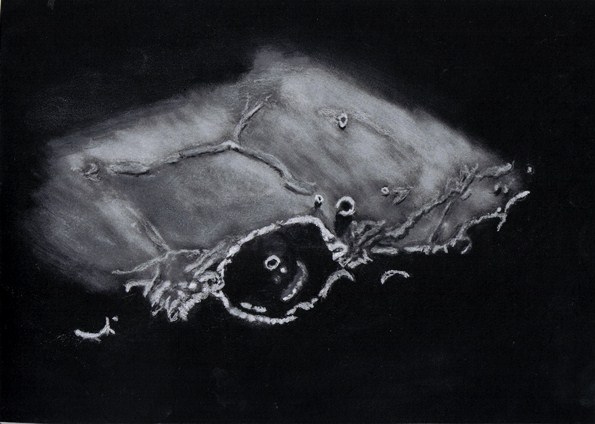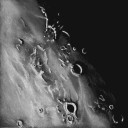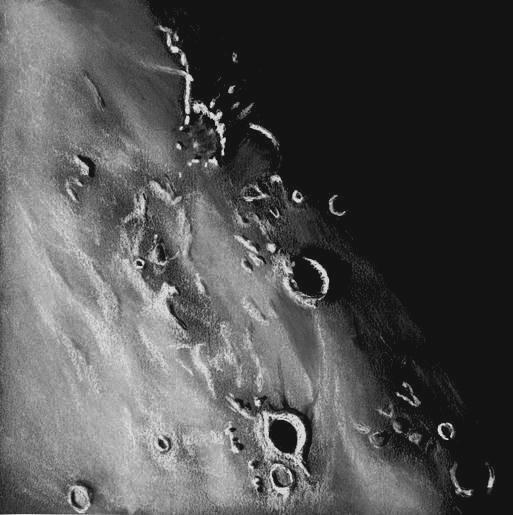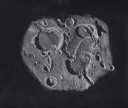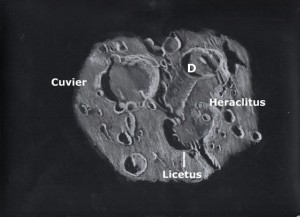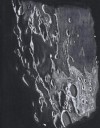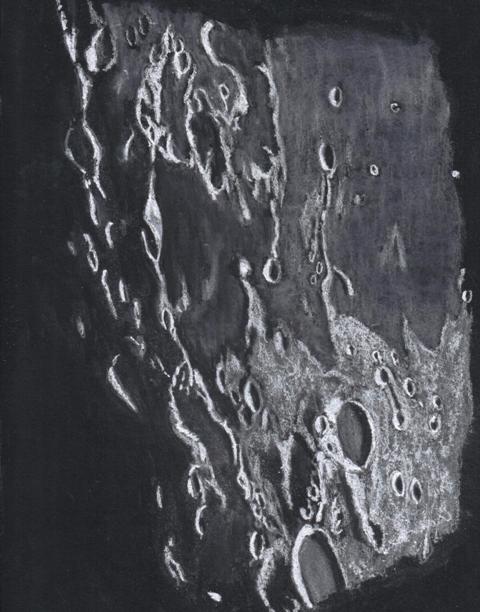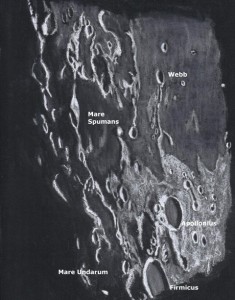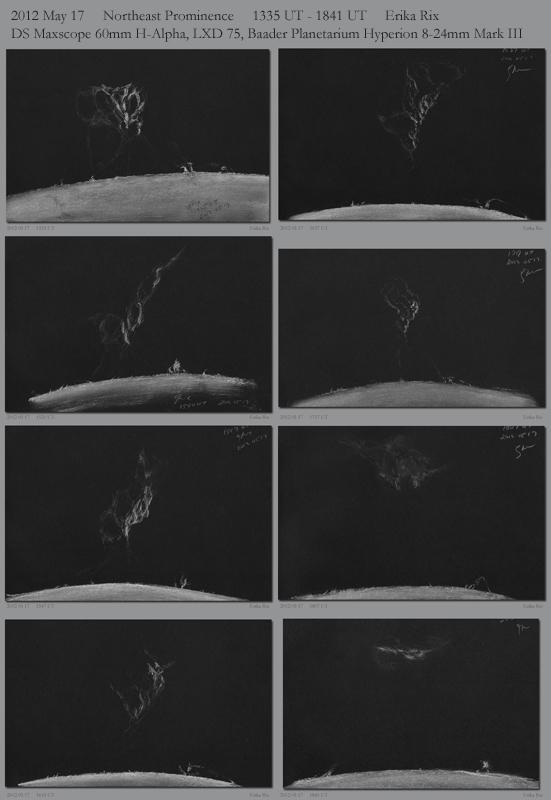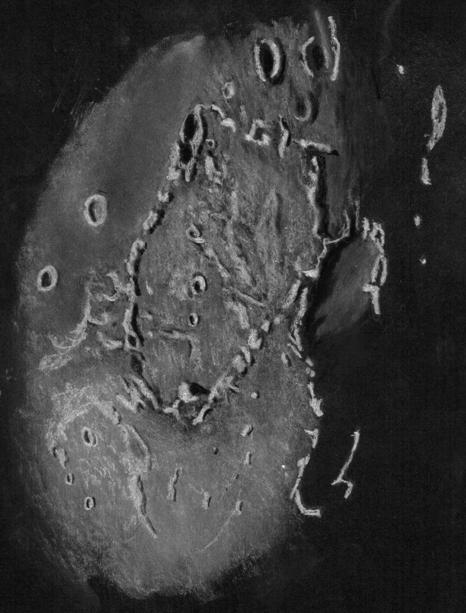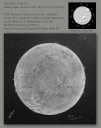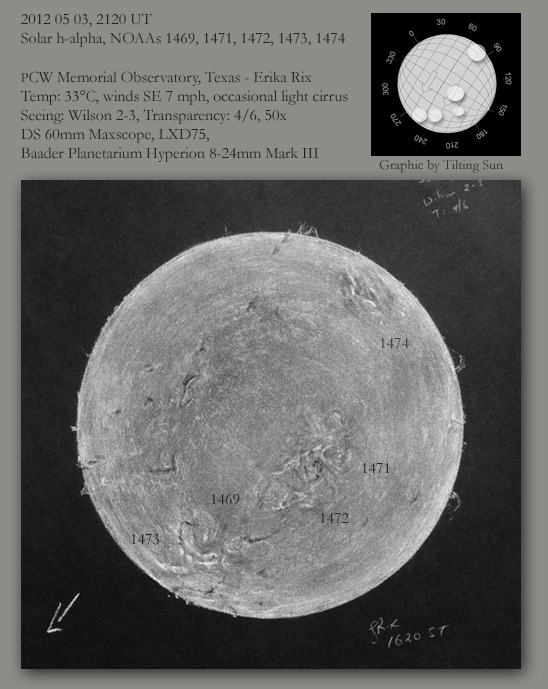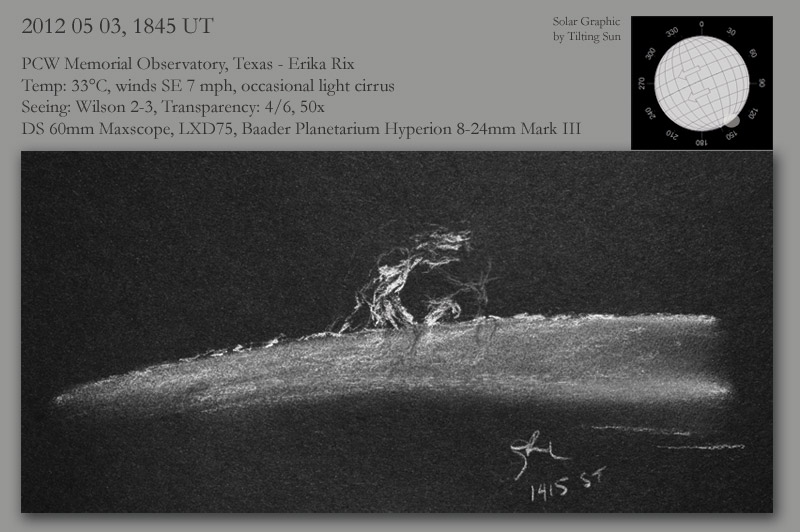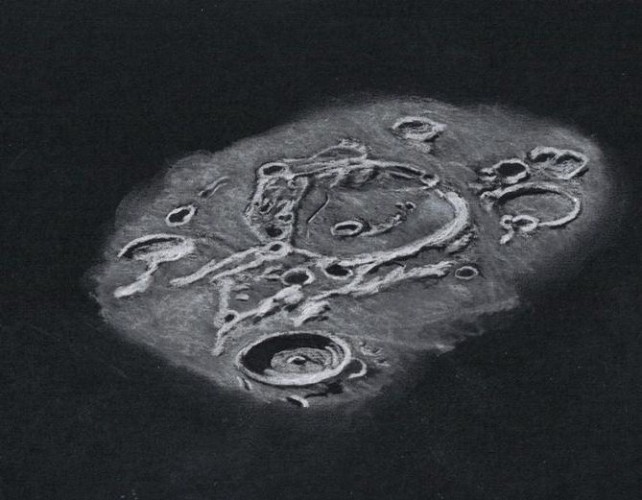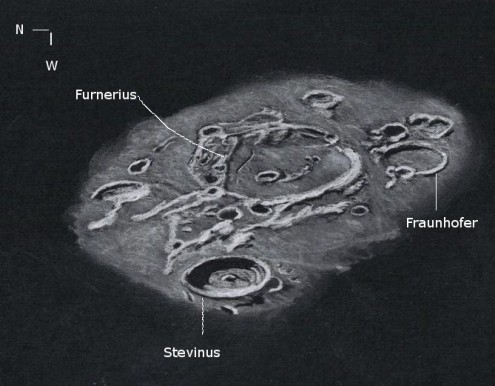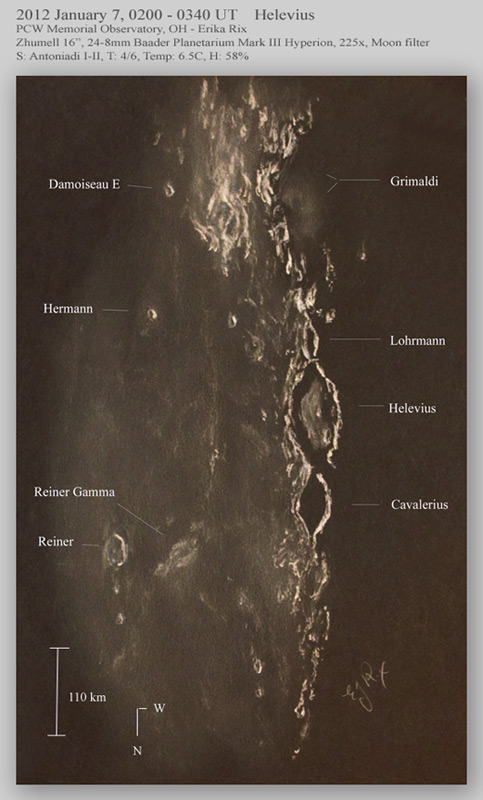
Mare Crisium (Move mouse over image to view labels)
2012 09 04, 0330 UT – 0615 UT Mare Crisium
Erika Rix, Texas – www.pcwobservatory.com
AT6RC f/9 1370mm, LXD75, Baader Planetarium Hyperion 8-24mm Mark III (FOV 68 degrees at 171x), no filter
84F, 56% H, winds gusting 5-10 mph, clear, Antoniadi IV increasing to II, T 3/6
Alt: 11deg 43´, Az: 83deg 22´ to Alt: 46deg 21´, Az: 105deg 21´
Phase: 318.4 degrees, Lunation: 17.48 d, Illumination: 87.4%
Lib. Lat: -03:07, Lib. Long: +03.74
Type: Sea (Sea of Crisis)
Geological period: Nectarian (From -3.92 billion years to -3.85 billion years)
Dimension: 740km
Floor: lava-filled and is ~ 1.8 km below lunar datum
Outer rim: ~3.34 km above lunar datum
Eyepiece sketch on black Strathmore Artagain paper, white Conte’ crayon and pencil, Derwent watercolor pencil, black charcoal, black oil pencil.
The evening started off with DSO hunting while waiting for the Moon to come up, even though the stars were and faint galaxies were starting to wash out from the moonlight rounding the eastern horizon. I started a sketch of M12 that will have to wait for another night to complete when the Moon isn’t so much of a factor.
Once the Moon rose between two short junipers behind me, I switched to black paper and scanned the terminator. Mare Crisium looked like it was taking a bite out of the Moon. I’ve always been a bit intimidated at sketching rough terrain, but took a stab at it nevertheless. Sketching in the highlights makes it incredibly easier in fast moving areas such as along the terminator. The trick is to have very sharp pencils at hand, and I made sure of that during set up before it got dark outside – although I did have to resharpen once or twice during the session (as well as stand up and stretch.) It was a rush against time to render the basin’s western edge before the shadows swallowed the view.
I began with the inner ridge line along the terminator, marking each highlighted crest individually with a very sharp Conte’ pastel pencil. Then as quickly and accurately as I could, started working my way west, alternating between the Conte’, charcoal, Derwent and oil pencils, focusing first on the highlights, then the shadows, followed by albedo.
Of particular interest, Crisium sports the crash landing site(although not visible from last night’s lunar phase) of the Soviet’s Luna 15 in 1969 and the landing site of Luna 24, 1976, when soil samples where successfully brought back to earth.
This was my first time observing the Moon with the AT6RC and once seeing sharpened up, the views were crisp and clear with good contrast. It’s especially good that we’ve never had to collimate this scope and I’m looking forward to trying it out on Jupiter soon.

